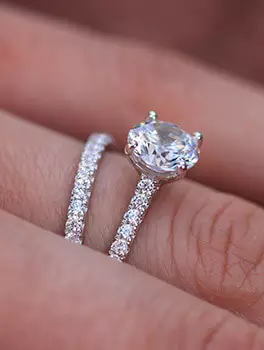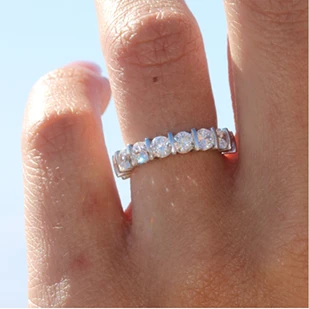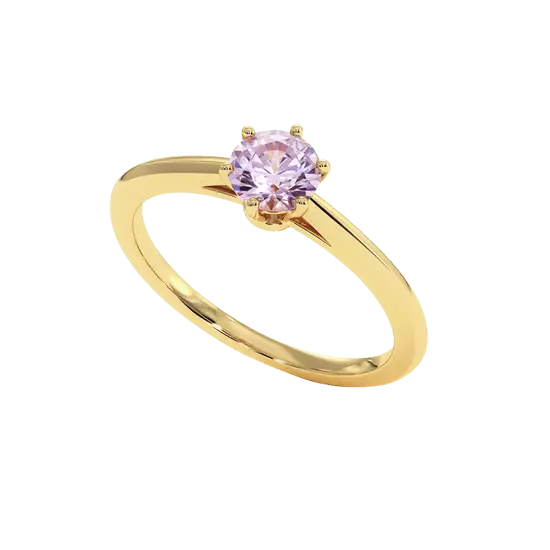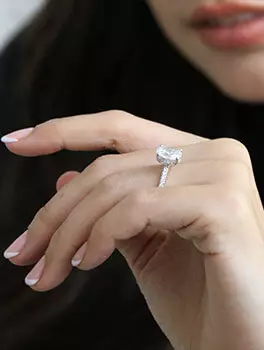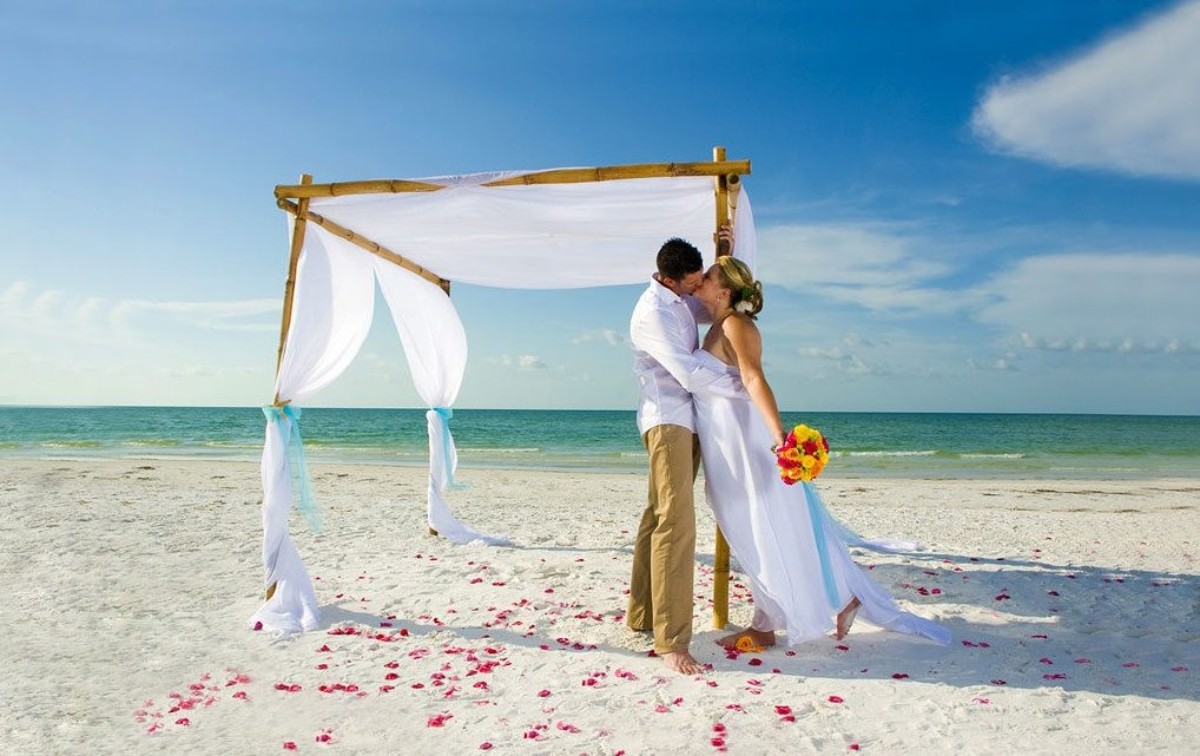Across Europe, each marriage tell a story, a legacy, an emotion.
From Provencal villages to Italian coasts, from Germanic plains to Greek islands, wedding traditions have been uniting couples for centuries in a shared celebration of love and sharing.
If customs vary from one country to another, all reveal a deep attachment to symbols: the exchange of rings, the bride's veil, the blessing, or even the banquet that brings together families and friends. These gestures, passed down from generation to generation, make marriage much more than a ceremony - a true rite of passage imbued with poetry and history.
At Celinni, we see these rituals as an endless source of inspiration: the sparkle of a diamond, the perfect roundness of a wedding ring, the promesse of an eternal bond.
Each piece of jewelry celebrates these in its own way. wedding traditions which continue to unite hearts and cultures through time.
The origin and symbolism of European traditions
Theorigin of marriage It dates back to time immemorial, long before the appearance of religious or civil ceremonies. In most European cultures, the union of two beings initially symbolized an alliance between families, before becoming the expression of a chosen and celebrated love.
Gradually, each country has shaped its own rituals - reflections of its values, faith, and way of life. France, for example, the French wedding tradition Emphasizes solemnity, elegance, and fidelity: the ring worn on the left ring finger, close to the heart, illustrates the strength of the invisible bond between two souls.
Throughout Europe, symbols correspond to each other:
- The circle of the alliance represents the infinity and continuity of love.
- The sail evokes purity and protection.
- The wedding meal embodies sharing and prosperity.
These gestures, sometimes modest but always full of meaning, convey the same conviction: to love is to commit with sincerity, respect, and trust.
And it is in this same philosophy that the House Celinni creates his/her jewelry - timeless pieces that celebrate love in the most beautiful ways European traditions.
Wedding traditions according to European countries
Every country in Europe celebrates marriage with its own rituals, steeped in history and poetry.
From France to Greece, these traditions, sometimes simple or spectacular, remind us that marriage is above all a universal celebration of love, fidelity, and shared joy.
?? France - The elegance and symbolism of the alliance
The French wedding tradition stands out for its refinement and attention to detail.
The exchange of alliances On the left hand, near the heart, is a deeply symbolic gesture: it embodies the promesse of a sincere and lasting love. The bride often wears something blue, old, new, and borrowed - four symbols of fidelity, continuity, happiness, and luck.
The procession to the town hall, the festive meal, and the first dance seal this union under the sign of elegance. In France, tradition and marriage are inseparable from the beauty of the gesture and the sincerity of the feelings.
At Celinni, this French elegance inspires every wedding ring, designed as a reflection of eternal love.
?? Italy - Rice, the dolce vita and the "bomboniere"
In Italy, the wedding is a celebration full of light and joy.
At the exit of the church, the guests throw some rice on the newlyweds, an ancestral symbol of prosperity and fertility. Every detail exudes the sweet life : the tables are overflowing with traditional dishes, and the celebration often lasts until dawn.
The newlyweds offer their guests some favor, small gifts containing five sugared almonds symbolizing health, wealth, fertility, longevity, and happiness.
These delicate attentions remind us that, in the Italian tradition, love is shared above all with generosity and elegance.
?? Spain - The 13 gold coins, or "matrimonial arras"
In Spain, a millennial custom still illuminates weddings: the exchange of "marriage arras", thirteen gold coins that the groom gives to his bride. These coins symbolize the months of the year, plus one to share with those in need.
This powerful ritual represents mutual trust and the commitment to take care of each other.
The Spanish bride, often dressed in white lace and wearing a mantilla veil, embodies purity and grace. The celebration continues with music, flowers, and the typical human warmth of the South.
Germany - The sawing of the trunk and the broken cut
In Germany, marriage is marked by solidarity and cooperation.
The newlyweds participate in a symbolic challenge: the sawing of a tree trunk. Together, they must cut a heavy log in half, to demonstrate their ability to face life's challenges as a couple.
Another tradition: the "Polterabend" is a German word, not French. It refers to a German wedding custom where guests break porcelain to bring luck to the couple's marriage. In English, it is still referred to as "Polterabend.", a party organized the night before the wedding, during which friends and relatives break dishes to bring good luck to the couple. The bride and groom must then sweep up the pieces - a gesture that symbolizes teamwork and the complicity of the future household.
Greece - The bridal crowns and the dance of happiness
In Greece, marriage is a true spiritual celebration.
The spouses wear "stefana", delicate bridal crowns connected by a white ribbon, symbol of their sacred union. During the Orthodox ceremony, these crowns are exchanged three times over their heads to bless their union.
After the ceremony, joy filled the party: the dance of happiness, or The term "kalamatianos" is a type of Greek folk dance and does not have a direct translation in English., gather all the guests around the newlyweds in a circle full of energy and love.
This harmony between spirituality and popular joy reflects the timeless beauty of Greek unity - a perfect balance between tradition and emotion.
The evolution of European traditions
If the European wedding traditions find their roots in ancient rituals, they have continued to evolve over time.
Today, couples draw both from the legacy of their ancestors and their own vision of love. The modern wedding is intended to be more intimate, personalized, and often symbolic - a subtle blend of tradition and freedom.
Some choose to get married outdoors, in a castle or on a beach, while others prefer a civil or secular ceremony. Theorigin of marriage remains the same - to unite two beings in love - but the way to celebrate it adapts to everyone's dreams.
The European traditions thus reinvent themselves:
- The veil sometimes gives way to a crown of flowers.
- Classic alliances are now accompanied by engravings or diamonds customized.
- Family meals become refined gastronomic experiences.
This renewal does not break with the past - it prolongs it. Because every wedding, whether grandiose or minimalist, remains a tribute to eternal love and the beauty of gestures passed down through generations.
Wedding jewelry: between heritage and modernity
Since always, the wedding jewelry occupy a central place in European traditions. Thealliance, a symbol of the infinite circle of love, is undoubtedly one of the oldest and most universal objects in human history. Wearing a piece of jewelry at the time of union is to perpetuate a gesture several millennia old, that of sealing a promesse eternal.
But just like modern marriage, jewelry is also evolving. Today, couples are looking for creations that reflect their image: refined, authentic and sometimes unique. Far from being limited to tradition, the alliances and engagement rings become works of art, carrying emotion and meaning.
At Celinni, this balance between heritage and modernity is at the heart of the jeweler's know-how. Each piece is conceived as a symbol:
- Thealliance classic celebrates purity and continuity.
- The engagement ring embodies the promesse of a common future.
- The pendant or the bracelet of marriage becomes a memory to pass on.
Created with respect for French jewelry tradition, Celinni jewelry combines artisanal perfection with the modernity of contemporary design. They accompany today's couples while perpetuating the emotion of yesterday's unions - because true elegance never goes out of style.
FAQ - Wedding Traditions in Europe
- What is the origin of marriage in Europe ?
Theorigin of marriage traditions dating back to antiquity. It first symbolized an alliance between families before becoming a celebration of love and personal commitment. Over time, each country in Europe has shaped its own traditions marriage, mixing religious, cultural, and symbolic rites. - What is the most well-known wedding tradition in France ?
The French wedding tradition the most famous is the exchange of alliances On the left hand, close to the heart. This gesture symbolizes fidelity and the continuity of love. Other customs such as the procession, the tiered cake, or the bouquet toss are also part of the French wedding heritage. - Why do we throw rice at the exit of the newlyweds ?
The rice throwing, very widespread in Italy and other European countries, symbolizes prosperity, fertility, and luck. Today, it can be replaced by flower petals, bubbles, or biodegradable confetti - but the meaning remains the same: to wish happiness and abundance to the newlyweds. - What is the meaning of the wedding ring ?
Thealliance is the quintessential wedding jewel. Its circular shape represents infinity, without beginning or end, symbolizing eternal love. In Europe, elle is traditionally worn on the left ring finger, because an ancient belief stated that a "vein of love" connected this finger directly to the heart. - What jewelry to give for a wedding ?
The wedding jewelry the most symbolic ones are the alliance, the engagement ring and the pendant.
Giving a piece of jewelry is like giving a piece of eternity: a precious memory to wear every day. At Celinni, each creation in gold 18 carats and diamond Natural embodies the emotion, purity and elegance of European traditions.
Conclusion - The union of hearts and cultures
Across Europe, the wedding traditions continuing to keep the magic of the first "yes" alive.
Whether they are religious or secular, old or revised, they all tell the same story: that of two souls promising each other fidelity and tenderness for life.
From France to Greece, from the past to the present, each gesture - a ring exchanged, a kiss sealed, a dance shared - perpetuates the emotion of a sincere love.
At Celinni, this emotion inspires every piece of jewelry: the sparkle of a diamond, the softness of handcrafted gold, the perfection of a wedding ring that stands the test of time.
Because fashions change, but love, it remains eternal.
You should like this
Wedding anniversary: the table of wedding anniversaries
The best wedding gifts for newlyweds !
Modern Engagements: The 2025 Trends to Know
Small wedding: tips for a successful intimate ceremony
Wedding congratulations: 65 phrases to congratulate the newlyweds !






















